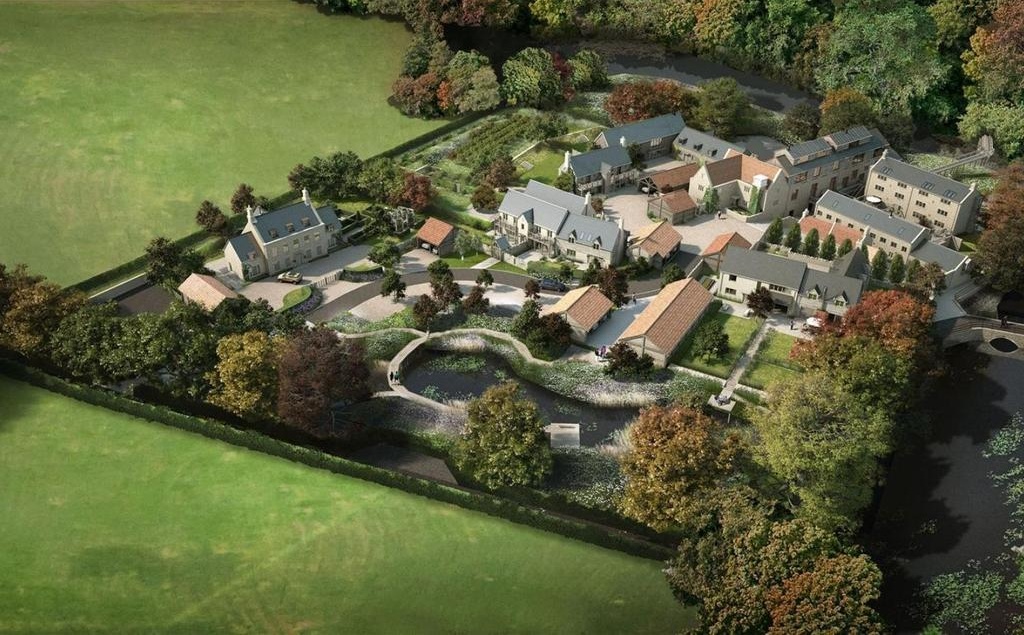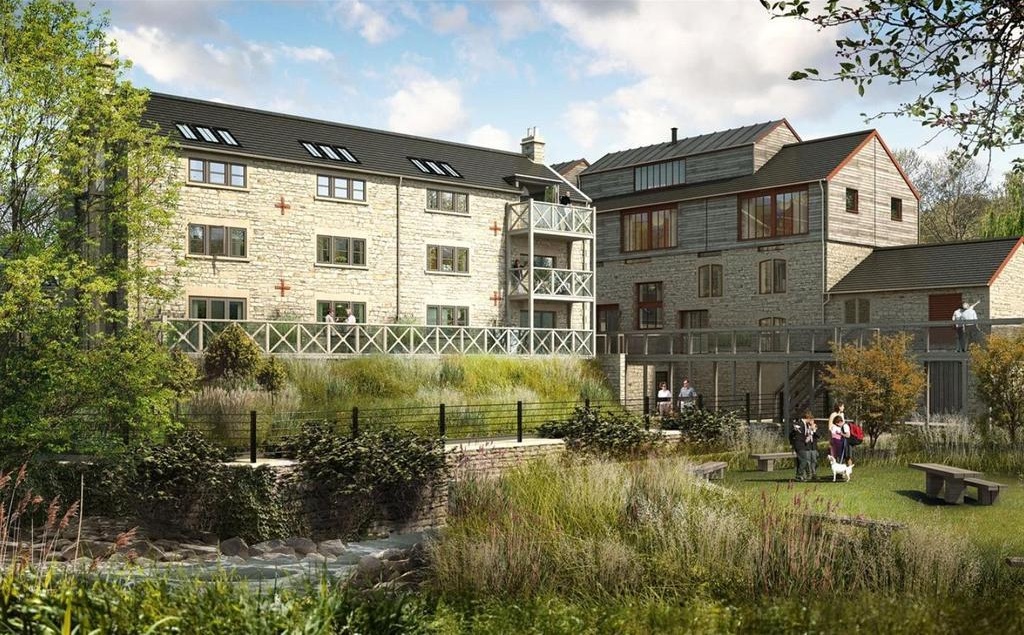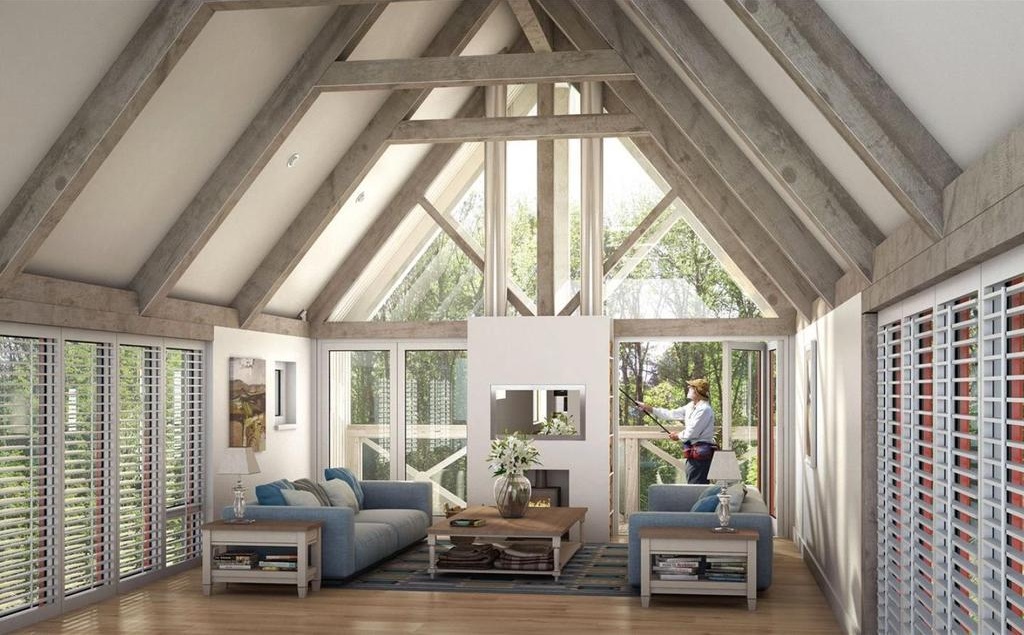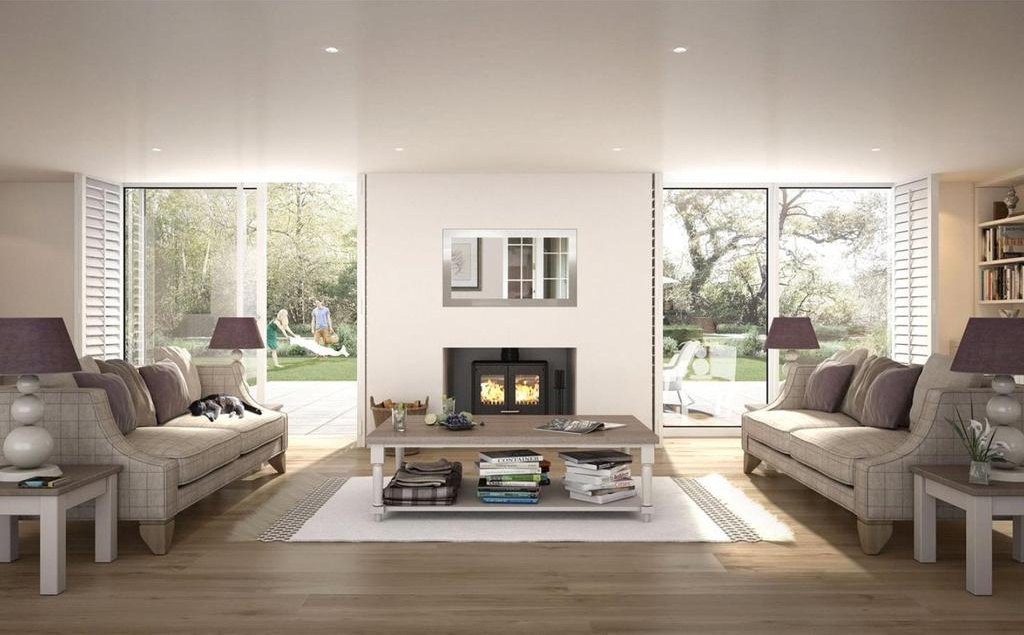Freshford Mill
Giving a historic mill a new future
Freshford Mill comprises a group of derelict mill buildings on the banks of the River Frome that are being converted into family homes and apartments, offering high-end contemporary country living.
The history of the mill can be traced back to Roman times. During its heyday in the mid-1600s, the mill employed upwards of a thousand people. However, it subsequently fell into gradual decline, employing only 92 people in 1816, and ceasing its wool production in the 1930s. During WWII, the buildings were used to store aircraft parts; after their Trowbridge factory was bombed, Peradin, a rubber manufacturer, moved to Freshford and remained there until 1995.
Planning permission was obtained to convert the historic buildings into residential use in the early 2000s but the initial developer went bust in the 2008 financial crisis.
Project Lead

Project Team
- Location Bath
- Client Pacalis Construction Ltd
- Completion 2020 (Projected)
- Value £12m
Remediation works
The site’s former use as a woollen mill and rubber factory required extensive on-site remediation to be carried out. Mann Williams worked closely with the client developer and remediation specialists to ensure the site was remediated to the satisfaction of the local authority.
Water works
The site’s location on the banks of the river meant dealing with both contamination issues from historic use and flooding risks was critical to a successful outcome for the development.
The pre-financial crisis developer had decided to let the bottom storey of the properties flood in such an event, with only the upper levels converted to residential use and a walkway provided for access and egress to higher ground. However, the new developer wanted to take a different approach which involved protecting the core of the site from flooding for storm events up to a 1-in-1000-year storm.
Mann Williams worked closely with the local authority and a flooding specialist to develop through the revised flooding strategy. This involved the provision of perimeter flood protection thanks to a combination of existing upgraded walls and new flood walls linking the buildings together.
With this change in approach, Mann Williams designed the storm flows from the site to utilise the on-site lake as a SUDS attenuation feature. A flood compensation area was provided to maintain the flood storage volume on the site.
Foundation works
Set atop limestone rock, the site levels were altered significantly over the years, requiring each existing and new building on the site to have different foundation solutions.
Mann Williams co-ordinated the site investigations and foundation design to deal with each location involving piled foundations, raft slabs and the re-use of existing mass masonry foundations where appropriate. Little remained of the main mill building on the site, apart from its four perimeter walls. The planning permission consented to the addition of two storeys of accommodation.
Steel works
The proposed conversion required a new steel frame to be inserted into the masonry building where no walls were parallel or truly vertical. However, with careful co-ordination of the survey, the frame was successfully inserted into the building with only a few minor on-site alterations required.
In order to provide access to the rear of the site and allow a phased development, two of the buildings built by the previous developer were demolished. These are due to be rebuilt from scratch on new foundations as part of the final phase of works.






A word from the Project Lead